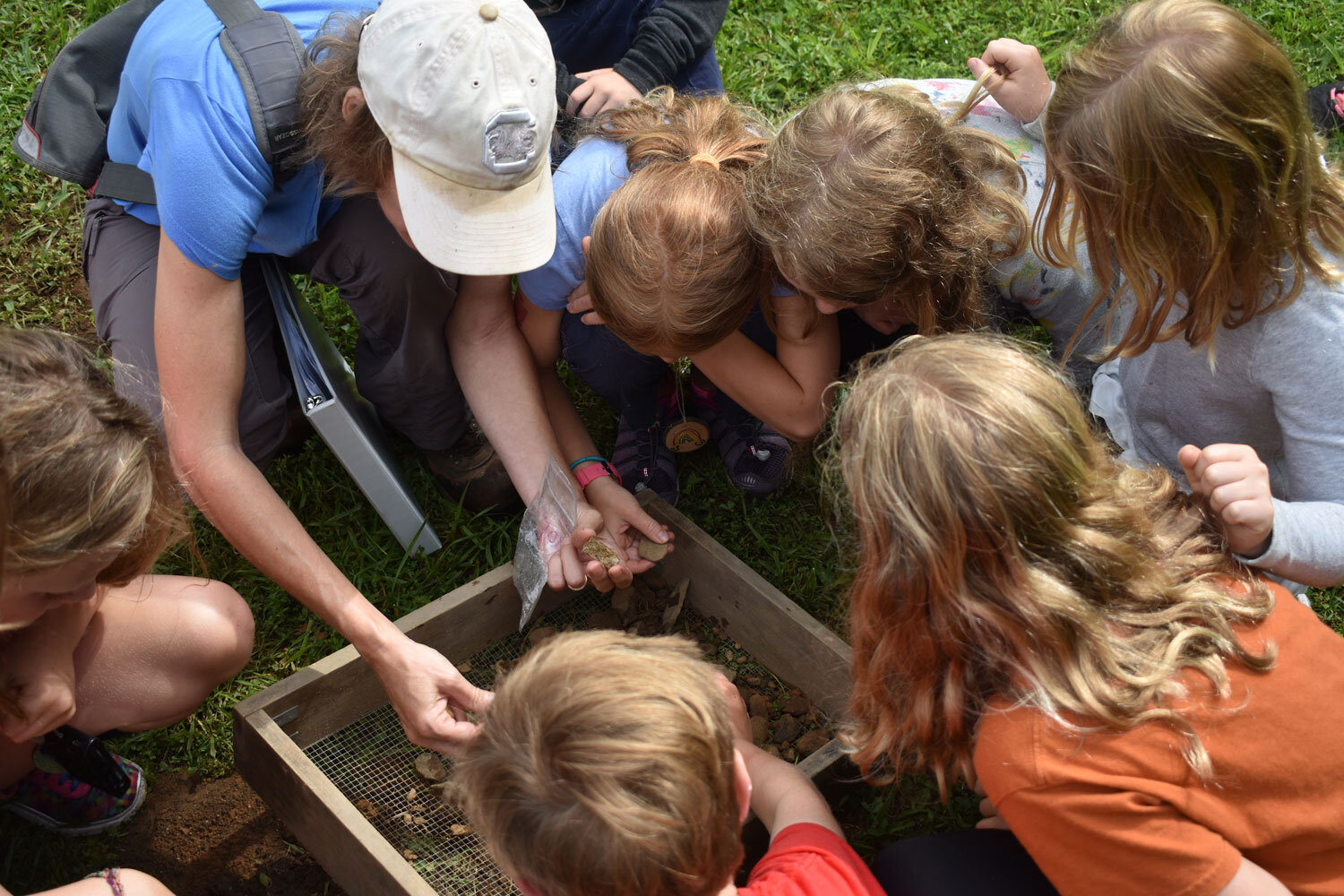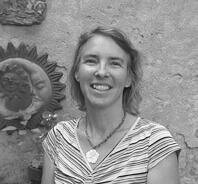The History Beneath Our Feet
/“As an archaeologist, I could see and feel the ancient Native American history everywhere from the first time I drove into Green River Preserve in 2011. I became determined to conduct archaeological investigations around the 3,500 acres of GRP.”
—Martha MIddleton Wallace greenriverpreserve.org/blog/
Martha Middleton Wallace of Charleston has been studying the archeology of the Southeast for the past 25 years. During the past decade, she’s been spending her summers at Green River Preserve Camp as Camp Archeologist. The Preserve is located just south of Flat Rock and owned by Flat Rock residents, Sandy and Missy Schenck. Missy is Martha’s aunt, and both of Martha’s children have attended Green River Camp for multiple summers.
During the last few months, Martha has written a series of articles published in the Green River Preserve Camp blog. Her articles explain the process of her archeological study at the Preserve and share updates on her findings. From her blog post:
The Preserve is a place rich with ancient history and culture. For the past nine years, … I have been able to unearth another layer to the story of the Native American culture in and around GRP and Western North Carolina.
Martha examining finds with campers
Martha is enthusiastic about the discoveries she is making at Green River Preserve and is just as excited to share her passion and knowledge with the Green River campers. “We talk about archeology and they get to see a lot of artifacts that have been found at Green River Preserve over the years. We talk about Native American history and what the area would have been like thousands of years ago.”
Martha’s blog posts provide an insight into the results of her systematic exploration of Green River Preserve. The evidence of ancient cultures who lived in the area is extensive and fascinating. And that evidence reminds us all that we are just the most recent inhabitants of this beautiful part of the world.
The evidence of Native Americans at GRP is extensive. There are petroglyphs on Long Rock, bivouacs throughout GRP, a fault line where an ancient rock quarry is located, many lithic scatters on the surface from flint knapping, and points dating from 10,000 BC to 500 years ago. Additionally, there is Native American pottery, a 5000-year-old Native American fire ring 2 feet below the surface, dwelling sites along the Green River, evidence of long-distance trade, and more.
Cross-section of soil layers at excavation site
The quantity of Martha’s discoveries begs the question of why Green River Preserve is such fertile ground for an archeologist and her digging tools. Martha explains that the size and pristine undeveloped nature of the Preserve is, in many ways, an archeologist’s dream. “It is over 3000 acres of protected land that's never been developed. And right next to it is the DuPont State Forest. So the fact that so much land is so well-preserved is incredible.”
Many of us date the history of Flat Rock and the surrounding environs to the arrival of Europeans in the 1700s. Martha’s discoveries make it clear, however, that the cultural history of the area actually dates back thousands of years. Her discovery of a wide range of pointed tools of various styles and construction techniques helps place local inhabitation as far back as 12,000 years ago.
In Native American archaeology, types of points, arrowheads, tools, and pottery are the best artifacts for defining the date of occupation on a site. In the Southeast, there is a specific typology and chronology for the various styles of points and dates of manufacture. This is useful in determining the age of a layer of soil, and hence the age of occupation. Over the years, Green River Preserve has yielded many examples of each of these types of points, dating from 10,000 BC to 500 AD.
The many artifacts at Green River Preserve have been discovered through the years by camp staff, campers, and through Martha’s systematic exploration of the area. When asked how she knows where to look and dig, Martha relies in large part on her ability to look at the terrain through the eyes of the ancient peoples trying to carve out an existence in the natural world. “You get to know what kind of areas they would have settled or camped. It’s often next to the confluence of a couple of creeks. After a while, you get a sense of what areas would have been most suited for a campsite or village.”
With the passage of centuries, artifacts are commonly buried beneath accumulations of soil and silt. The array of evidence of the ancient cultures that preceded us is very often buried just a few inches below our feet.
As these layers of soil build, humans have dropped their tools, pottery, jewelry, or other personal items near their home, at a campsite, or along a path. Wooden structures have been abandoned, decomposing in the soil leaving behind a dark stain, called a feature. Fire rings have been abandoned and covered up with layers of soil. Archaeologists find these artifacts and features in excavations and help build upon the story of the Native American culture in North Carolina and throughout the world.
Projectile point traditions of the American Southeast
Martha points out that some of the materials discovered did not originate locally - indicating that there may have been extensive trade with groups from very different regions. As an example, shells from the coast are frequently found in mountainous sites. “I think the people were traveling for great distances and sharing knowledge and materials.”
What motivates a person to stick a shovel in the ground and sift through the layers of time to discover the long lost possessions of people gone for thousands of years? For Martha, it is an opportunity to add to the relatively limited body of knowledge about Native American culture in the Southeastern United States. “I hope to add to their story. How did these people live in a day to day life? There are so many unknowns. With this incredible vast protected land that is Green River Preserve, I'm hoping we can add to that story.”
To read all of Martha’s blog posts - and to find future articles - visit https://greenriverpreserve.org/blog.
Martha Middleton Wallace
When Martha is not exploring the terrain and digging holes as Green River Preserve’s Camp Archeologist, she operates a tour business in Charleston called Charleston Perspective Walking Tours. As a 13th generation Charlestonian, Martha traces her lineage back to one of the very first settlers in Charleston. Combining her heritage with a keen eye for history, Martha has extraordinary qualifications to tell visitors of her hometown. Learn more at www.charlestonperspective.com.
About Green River Preserve
Green River Preserve’s programs and activities include experiential learning opportunities that spark diversity of thought and creativity.
A wide variety of activities such as nature, hiking, rock climbing, mountain biking, kayaking, canoeing, outdoor skills, environmental science, fly fishing, music, guitar, art, theater, pottery, woodworking, archery, and BB skeet foster lifetime learning skills.
Learn more at greenriverpreserve.org.








